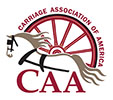
Q. Can you tell me when sleigh bells were first used and if they were used for some reason other than their musical sound?
A. I don’t suppose it would be possible to say with any certainty when sleigh bells were first used, but we do know they were used in Europe as early as the 17th century. The prime reason for their use was safety. A fast moving sleigh moving over packed snow makes hardly a sound, not even from the horse’s hooves. Often there would be only one track on country roads and this was used by traffic moving in both directions, so some kind of audible warning was necessary and what could be better than bells? The sound of bells travels long distances in cold still air.
It is probably that sleigh bells were used in this country from the time that sleighs, or sleds, first appeared in the 17th century. In many northern states it was illegal to use a sleigh without bells, and some of these ordinances may still be in force.
Bells soon came to be valued for the beauty of their tone and, in time, the making of sleigh bells became a special craft. According to E.V. Mitchell in “the Horse and buggy Age in New England”, one William Barton was the first American sleigh-bell maker. Barton began making bells in East Hampton, Connecticut in 1818.
In the later years of the last century sleigh bells were available in several different forms. The most popular were “body bells” which were sets of small bells mounted on leather straps, and they were available with as many as 48 bells on a string, sometimes graduated, sometimes uniform, in size. The bells themselves were either cast in bell metal or made of wrought steel nickel-or brass-plated. Sets of martingale bells were similar and these were made to hang round the horse’s neck. Shaft bells were usually open-mounted bells mounted in sets of four bells on metal strips that could be screwed or strapped to the shafts or pole. Saddle chimes were fastened to the rein terrents on the saddle, and Swedish bells were made to fasten to the back strap. Heavy horses carried team bells fastened to their collars.
Perhaps it is commentary on the age in which we live that the warning devices on modern autos sound more like the bellow of some fierce beast and are intended to alarm rather than charm the ear.
C.J.
From The Carriage Journal, Vol. 21, No 4, Spring 1984
